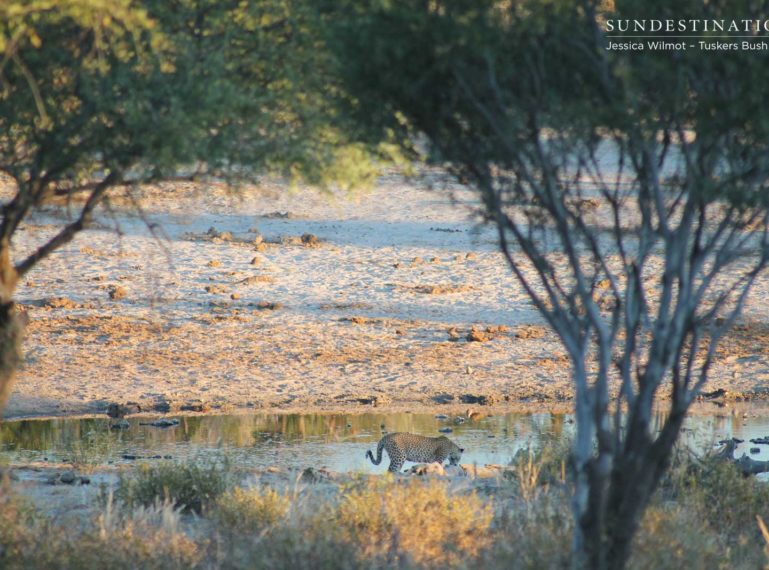
Tusker’s Bush Camp is nestled on a 365, 000 traverse and there’s plenty of untamed wildlife hiding in the arid thickets, waiting for the right moment to reveal themselves. We’ve delivered photos of roaming plains game and now its time to show off the big cat sightings. Just recently Tuskers installed a camera trap to discover what happens in the dead of night while guests are cocooned in their luxurious percale linen. Lo and behold, we were not disappointed with the results. Leopards, plains game and hyenas were caught on camera!
The leopards were probably the highlight, which is why we’ve decided to introduce you to the leopards of Tuskers. At the moment there are a confirmed 2 leopards in the area and speculation of a third. Jessica Wilmot, camp manager and wildlife expert, is working on leopard identifications. The process is quite tough at the moment because the footage is not clear enough to sex and ID the cats. However, there is one leopardess that is very fond of walking and weaving her way around camp.
Leopard’s are notorious for being aloof and traverse territories with high prey density. Females normally seek out areas with potential den sites and males seek out areas laden with females. There is an abundance of plains game in the area, which means a ready availability of food.
As you can see from the camera footage, there was an unsuspecting duiker in the thickets – readily available food for our big cats. In the mix you’ll also see a hyena lurking around. These animals are some of the most successful carnivores in the wild. Prolific scavengers and successful hunters, their role in the ecology of a reserve is vital. By devouring a cleaning up a carcass, they may prevent the spread of disease.
Jessica sent us this report:
- There was a leopard casually strolling around camp, close to tent 6. Could this be the local female always seen at camp?
- There are 2 individuals who arrive early in the morning and late at night. And we speculate there’s a third leopard. Being nocturnal predators and opportunistic hunters, the hours of arrival would make sense. They’re stealthy hunters and use the cover of thickets to hide and ambush their prey.
- The leopards are often grunting outside the tents. Leopards have a distinct rasping bark which is quite a guttural sound.
- The fresh leopard tracks are often seen in the morning when guests walk across to the main area for breakfast.
- The female leopard, the one that strolls around camp, gave birth to two cubs on separate occasions in the hut at the entrance to camp. Both cubs have been seen close to camp.
- A leopard emerged in broad daylight out of the scrub behind the pan. It stopped to drink but was initially a bit skittish. Having a waterhole in front of camp means there’s plenty of scope for some pretty incredible game viewing.
- The leopards on the camera trap are the ones that often wander into camp. Clearly Tuskers is one of their territories!
We’ll keep everyone updated about the leopards of Tuskers Bush Camp, For now, we’re just getting started with the introductions.
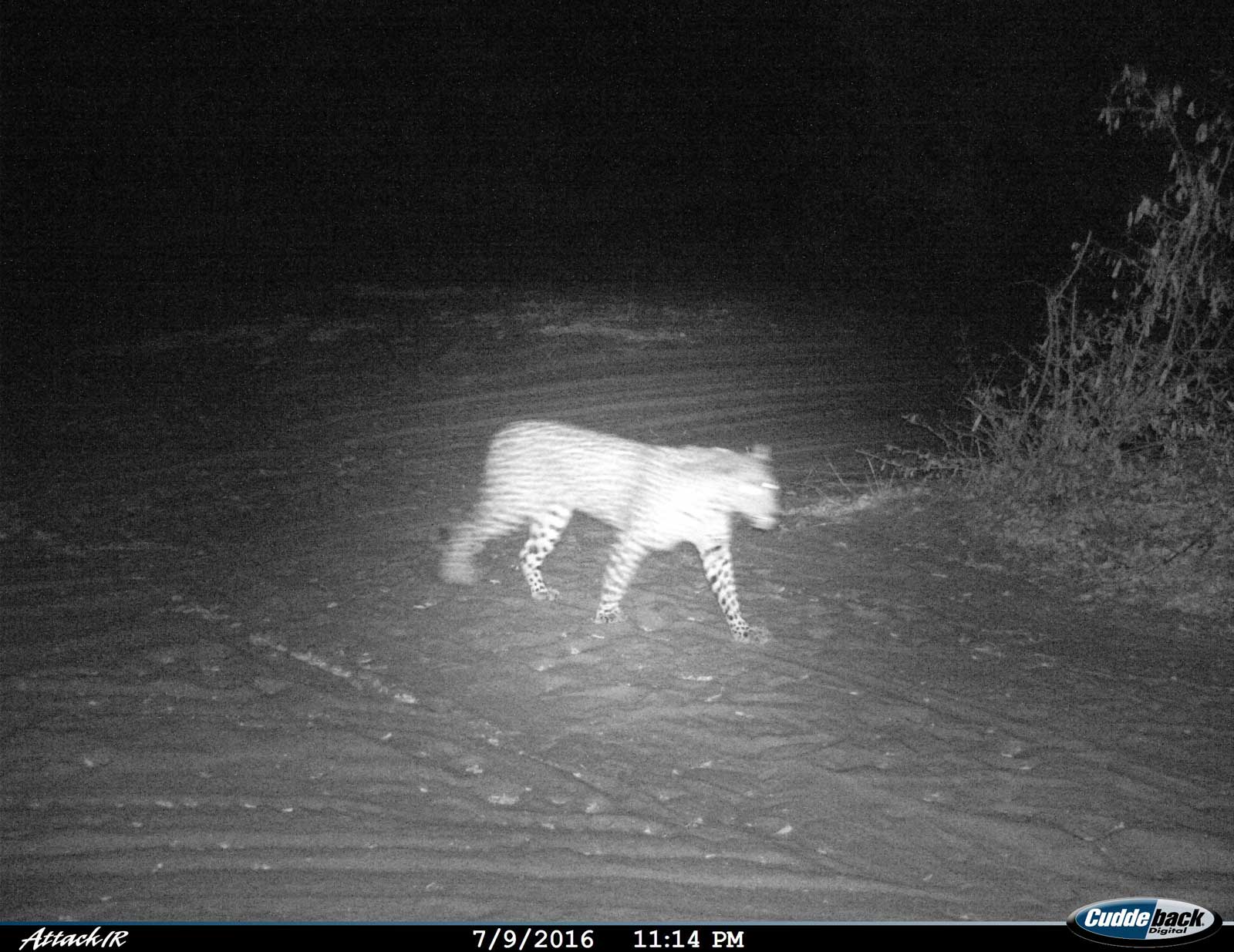
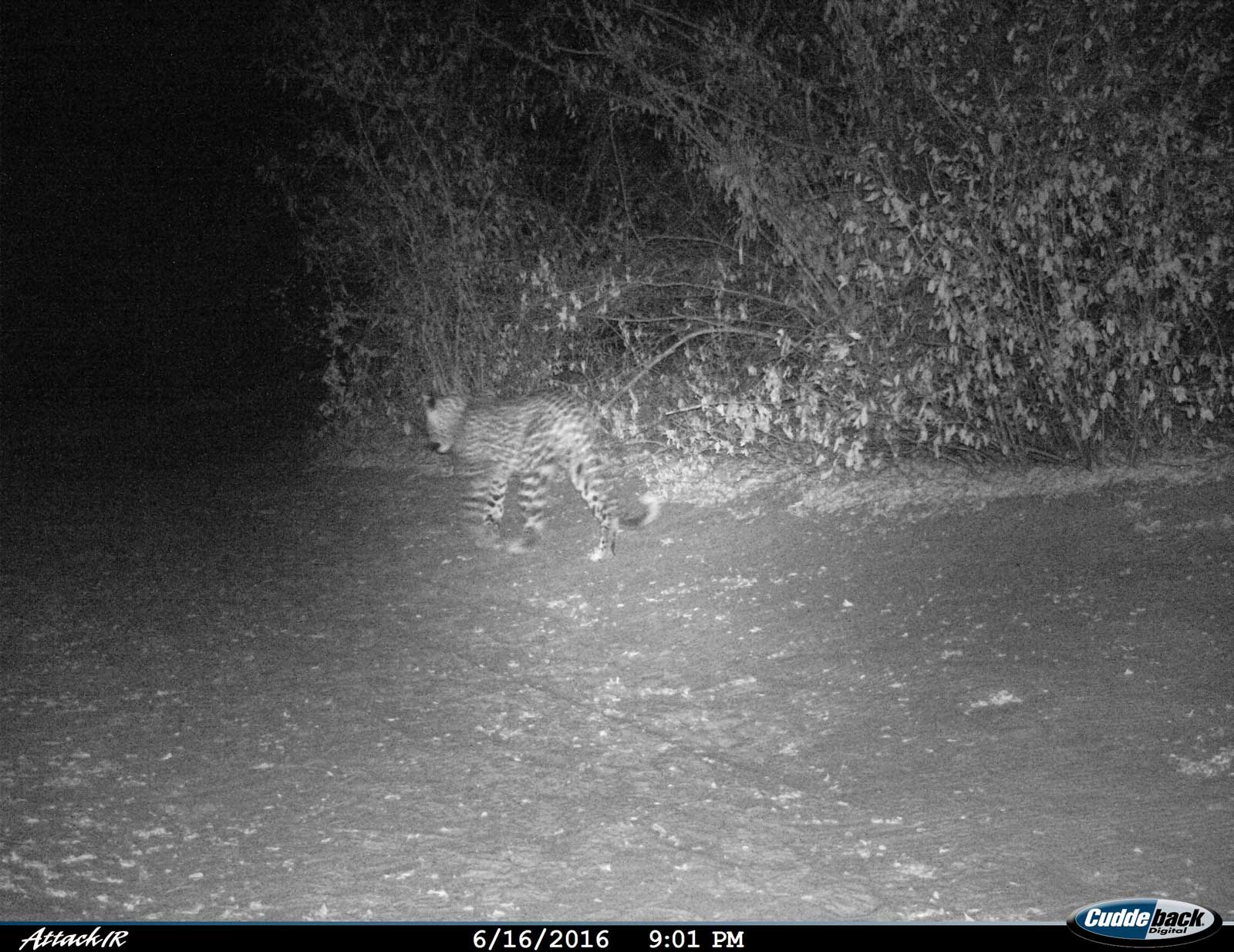
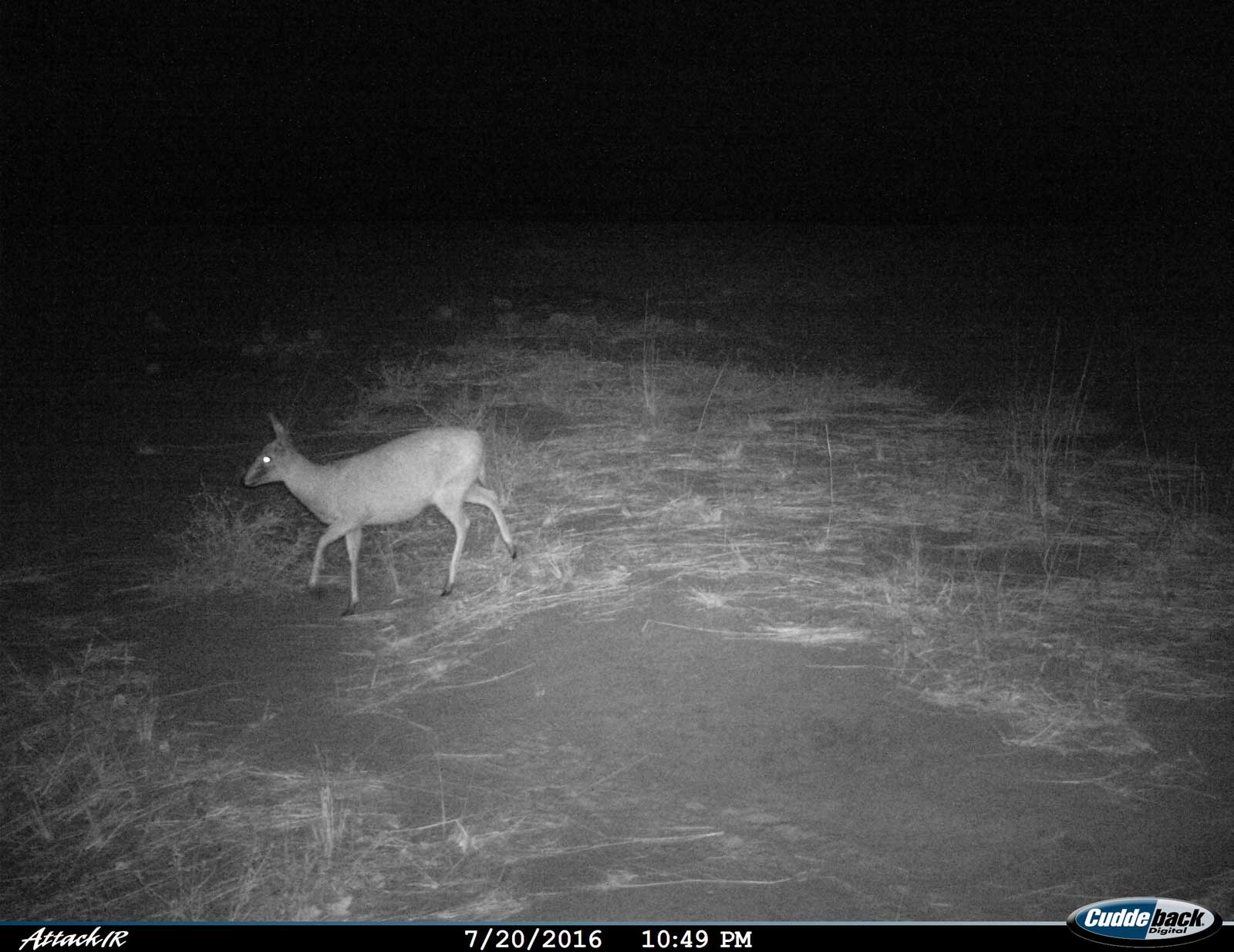
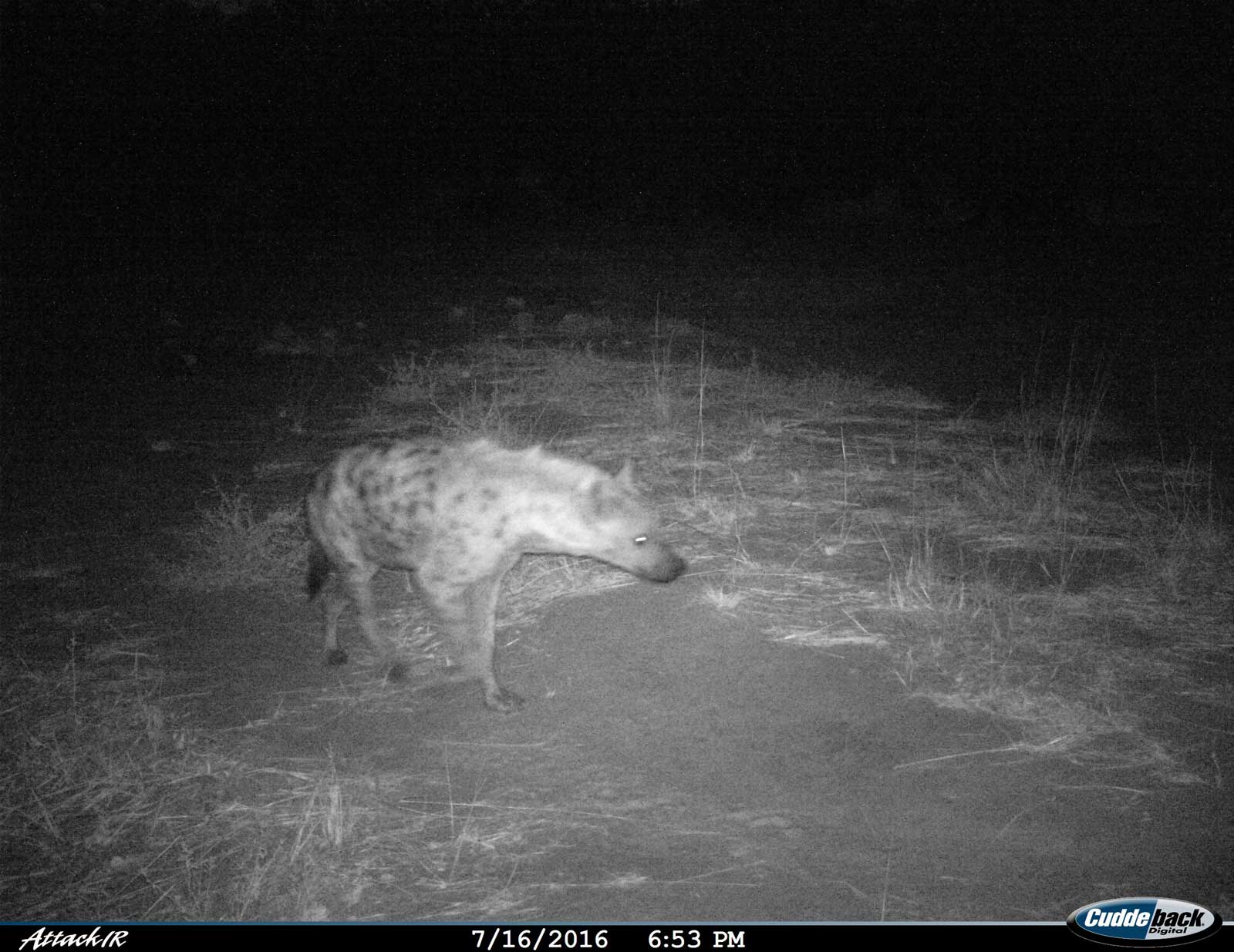
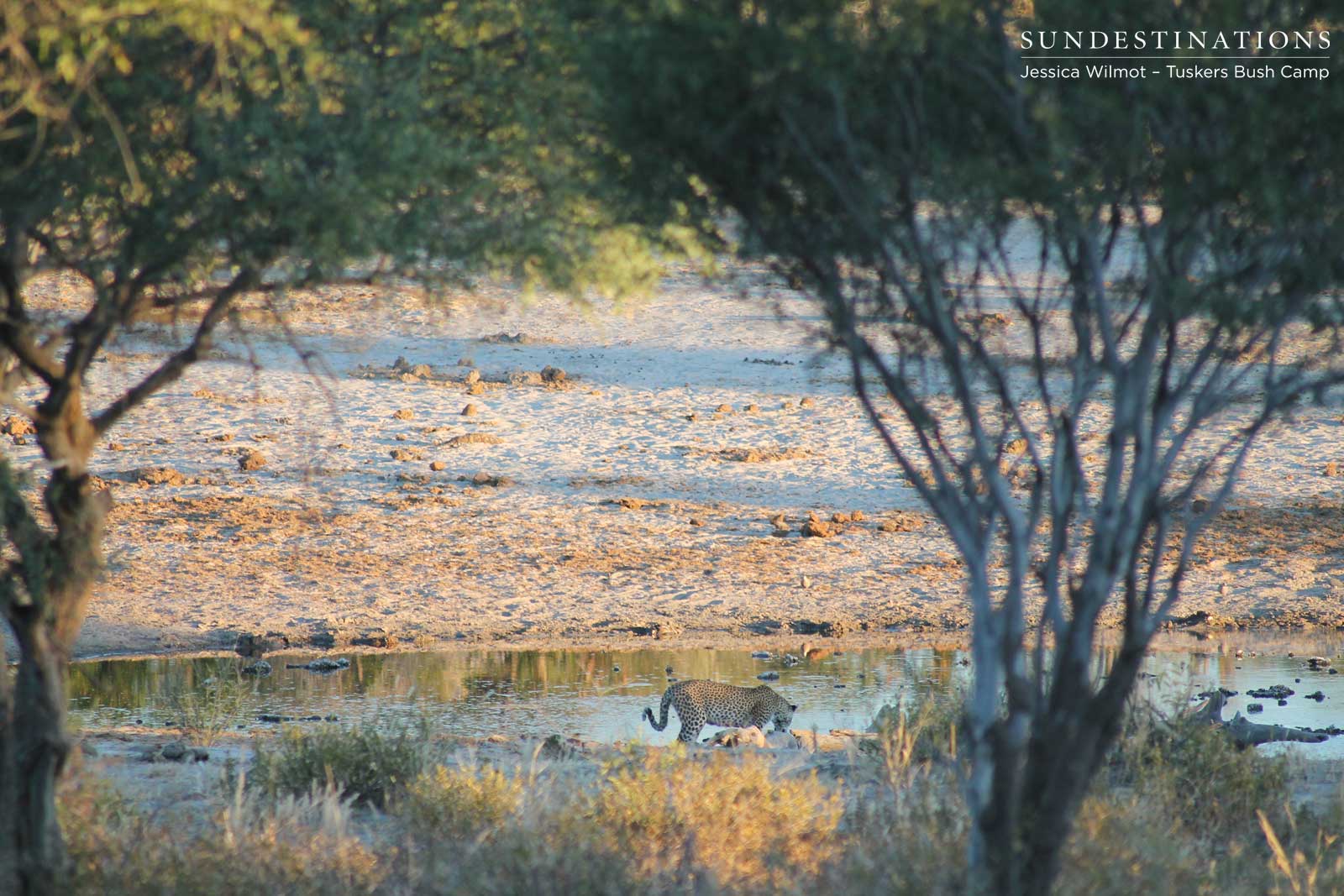
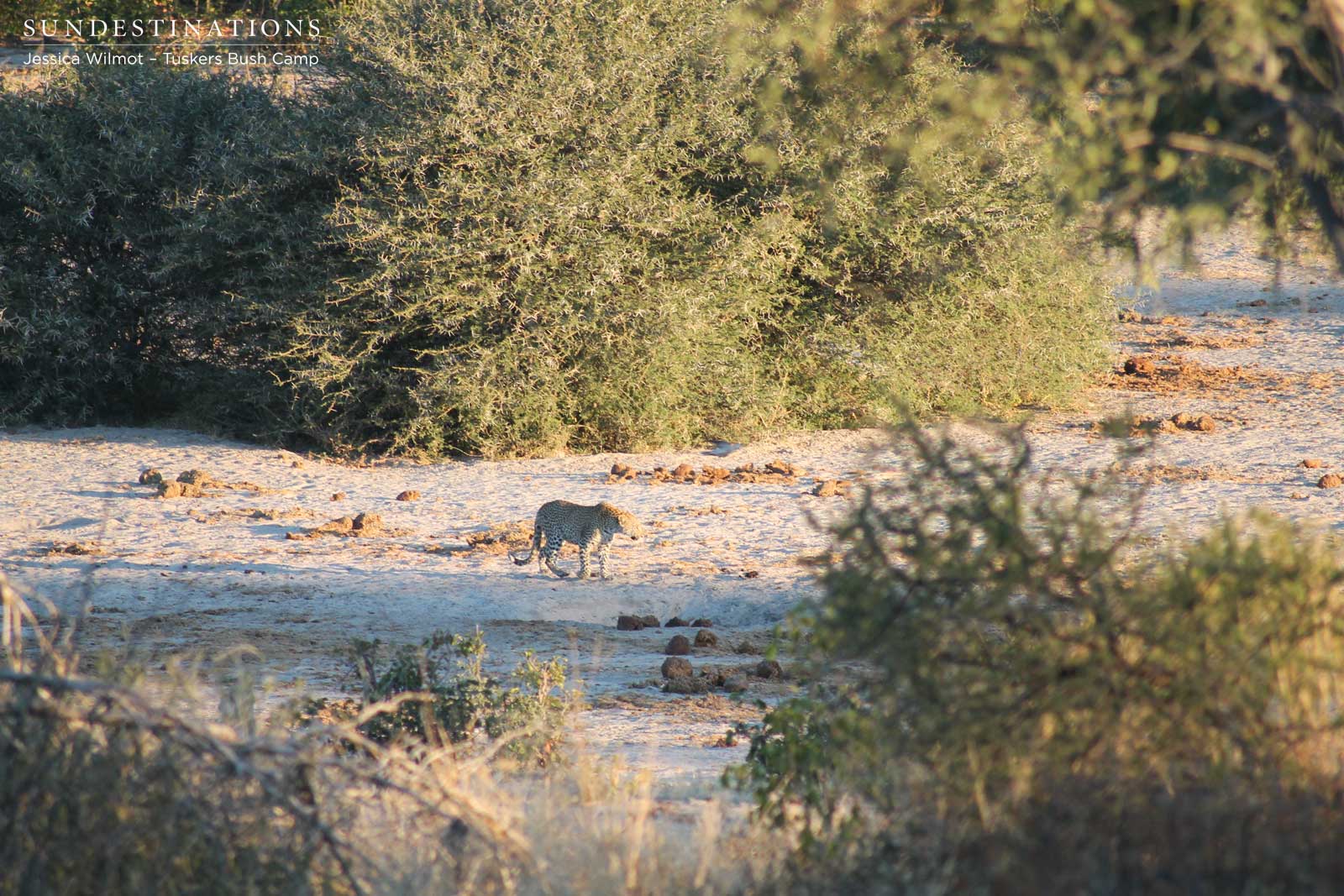
Leave a Comment